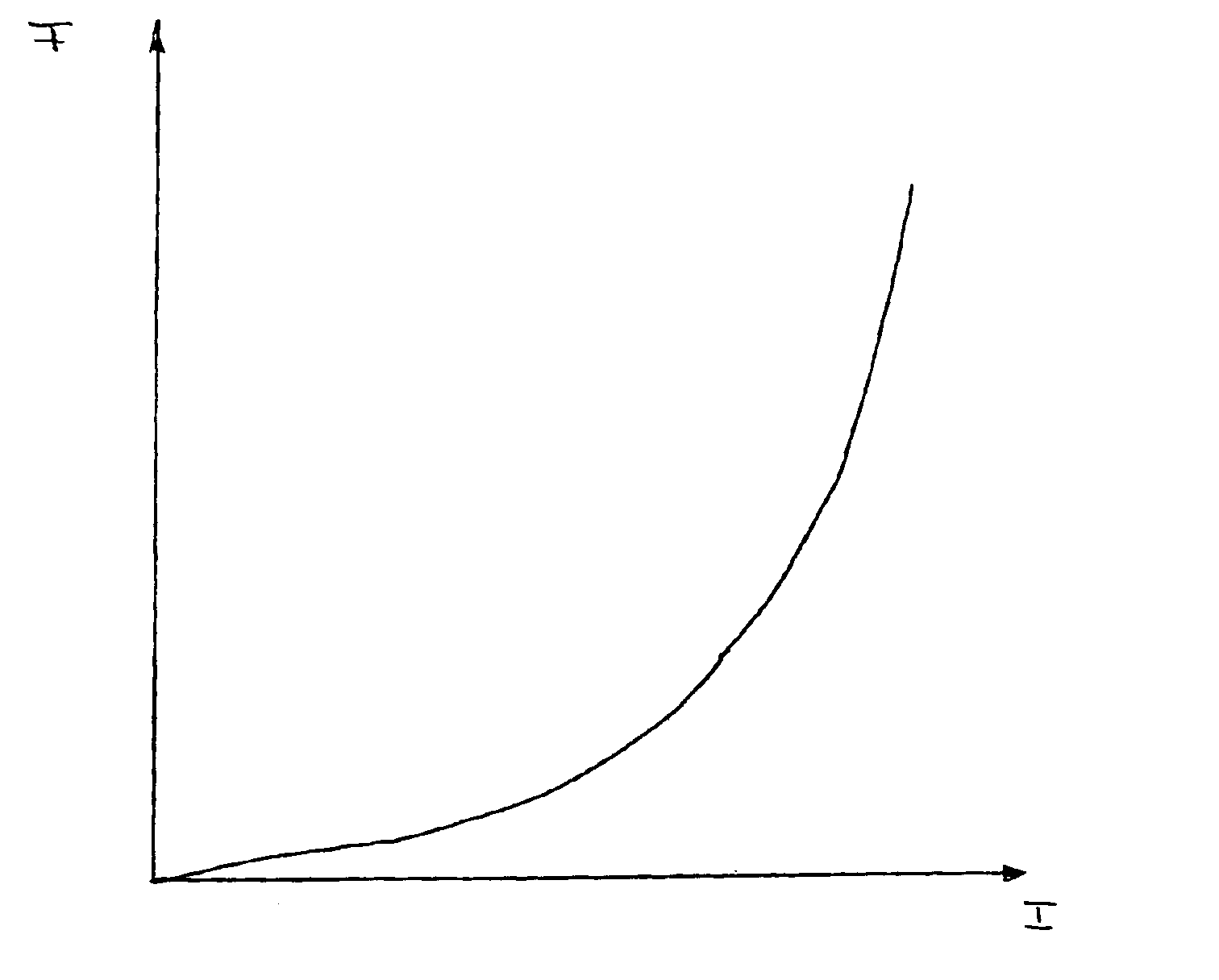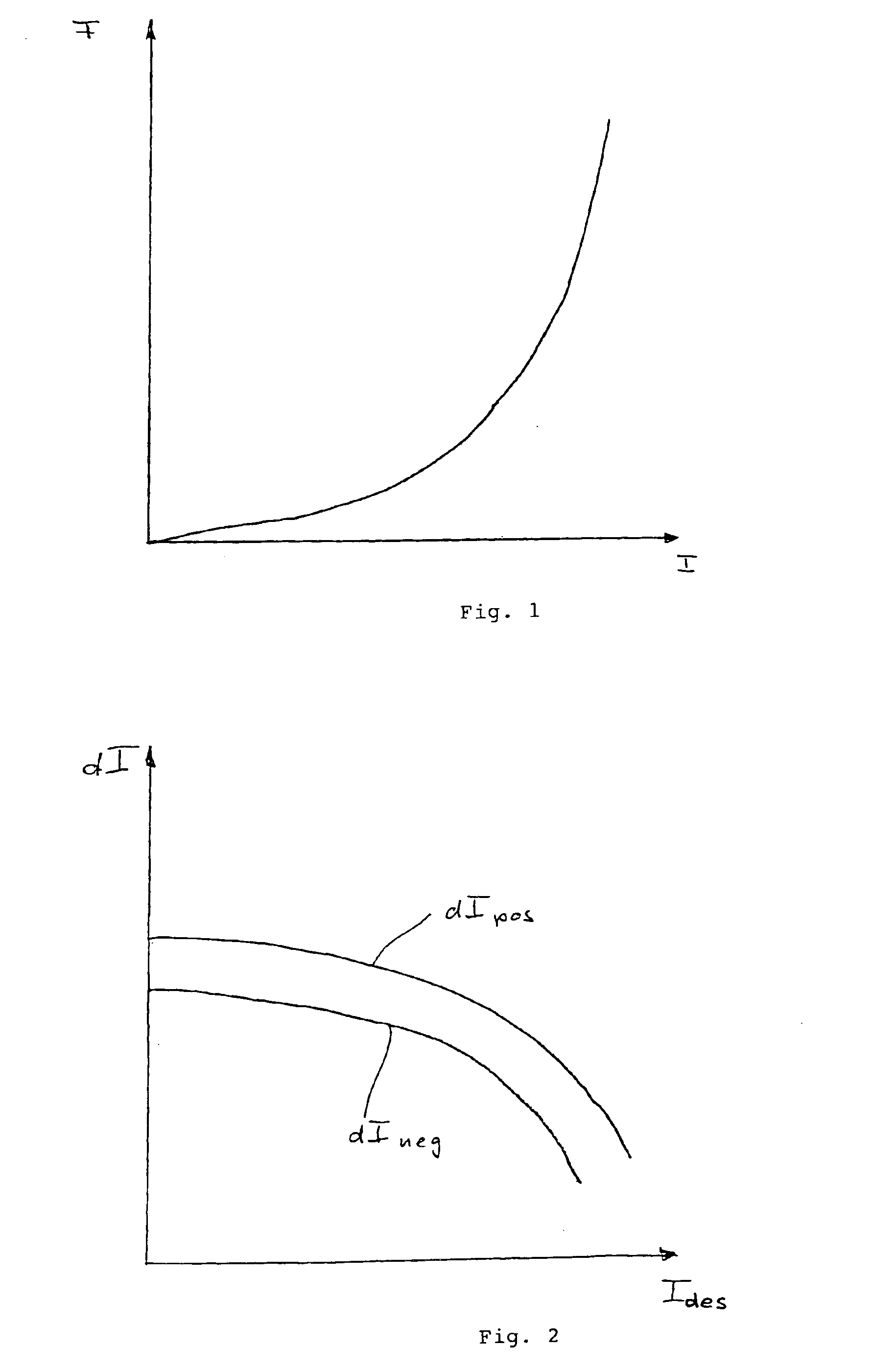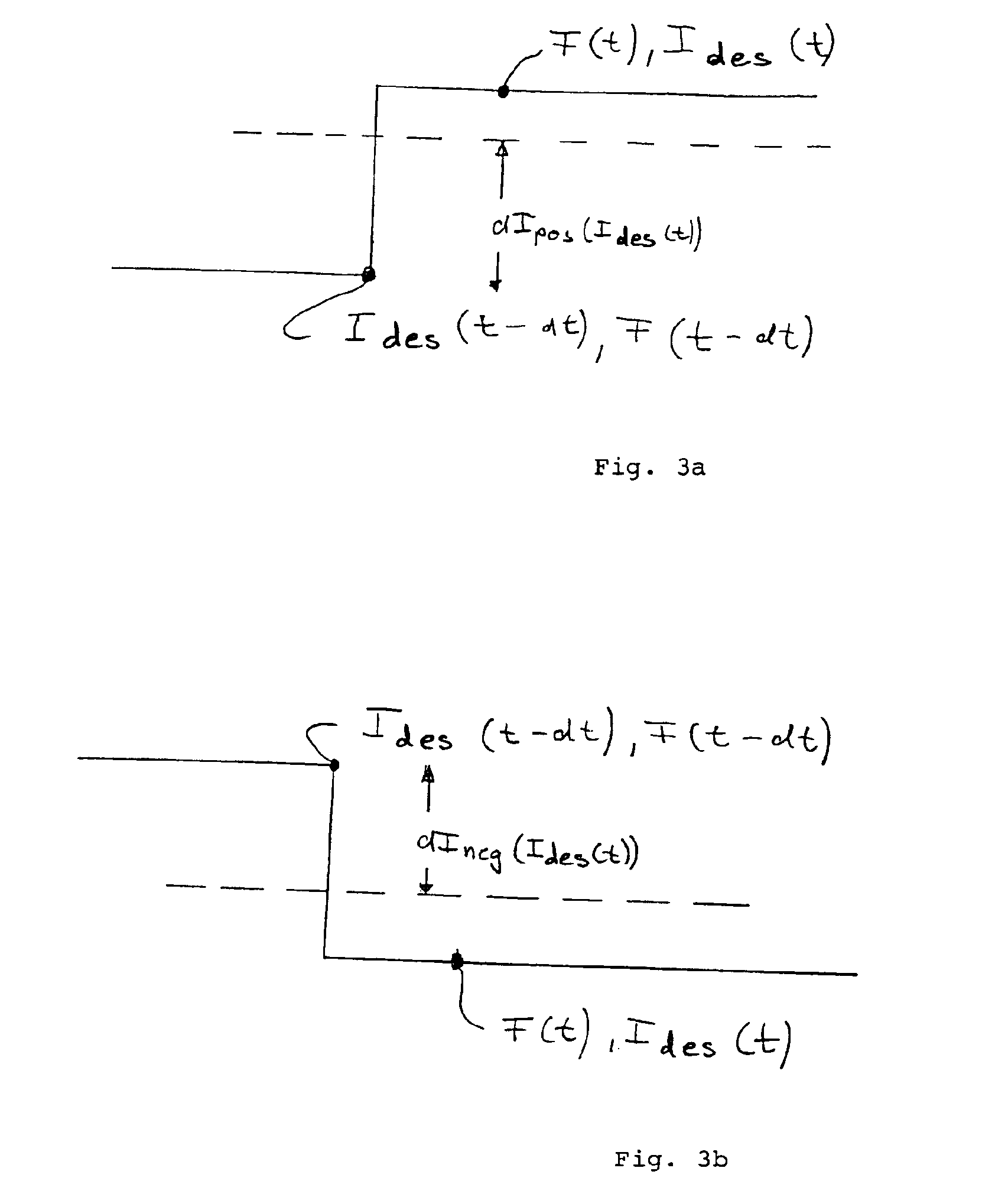The
advantage of the invention is that disturbing noises in the motor vehicle, which are caused by an intense jump-like change of the damper current of an electrically adjustable damper, can be reduced and / or suppressed. A further
advantage of the invention is that, for this reduction or suppression, no additional components such as mufflers, et cetera or changes of existing components are necessary. A further
advantage of the invention is that the control of the electrically adjustable damping force is possible in an unlimited manner via the current within specific pregiven limits.
is that disturbing noises in the motor vehicle, which are caused by an intense jump-like change of the damper current of an electrically adjustable damper, can be reduced and / or suppressed. A further advantage of the invention is that, for this reduction or suppression, no additional components such as mufflers, et cetera or changes of existing components are necessary. A further advantage of the invention is that the control of the electrically adjustable damping force is possible in an unlimited manner via the current within specific pregiven limits.
According to another feature of the invention, for a
positive current change (that is, for an adjustment of the current to higher current values, which effect a greater damping force), a different limit for the adjustment per time interval is pregiven than for a negative current change (that is, the adjustment of the current to lower current values and therefore the adjustment of the damping force to lower force values). The advantage of this embodiment becomes manifest when one considers that the current / damping-force characteristic line does not run linearly. Rather, for some typical electrical dampers, the current / damping-force characteristic line runs progressively. If, in this case, a
lower limit is pregiven for the
positive current change per time interval than for the negative current change per time interval, the progressive trace of the current / damping-force characteristic line can be compensated; that is, the jumps in the damper force can be selected to have approximately the same magnitude independently of the direction in which the current is to be changed.
According to another feature of the invention, the limit per time interval for the
positive current change as well as the limit for the current change per time interval for the negative current change is pregiven in dependence upon the desired current to which the control is to be made. The advantage of this embodiment is that an additional possibility is provided to preset the limits for the current change in dependence upon the current / damping-force characteristic line and to adapt the limits to this characteristic line.
According to a further embodiment of the invention, the limit of the permissible current change per time interval for the positive current change as well as for the negative current change is preset as a function of the speed of the bodywork of the motor vehicle (that is, the relative speed of the bodywork of the motor vehicle to the wheel of the motor vehicle in the region of the particular damper). This embodiment is especially advantageous when applying the skyhook control method because, in this control method, the damping force requirement is derived from the bodywork speed and, in the simplest case, utilizing a proportional member. In this case, a low damping force request is adjusted for low bodywork speeds and a high damping force request is adjusted for high bodywork speeds. Especially for low damping force speeds, large current jumps are avoided because of the method of the invention in that for low bodywork speeds, the permissible current change is greatly limited.
According to another embodiment of the invention, the duration of the time intervals within which a specific current change is permitted (which is restricted by the limits) lies in the range of 1 ms to 50 ms, preferably, in the range of 15 to 25 ms.
 Login to view more
Login to view more  Login to view more
Login to view more 


